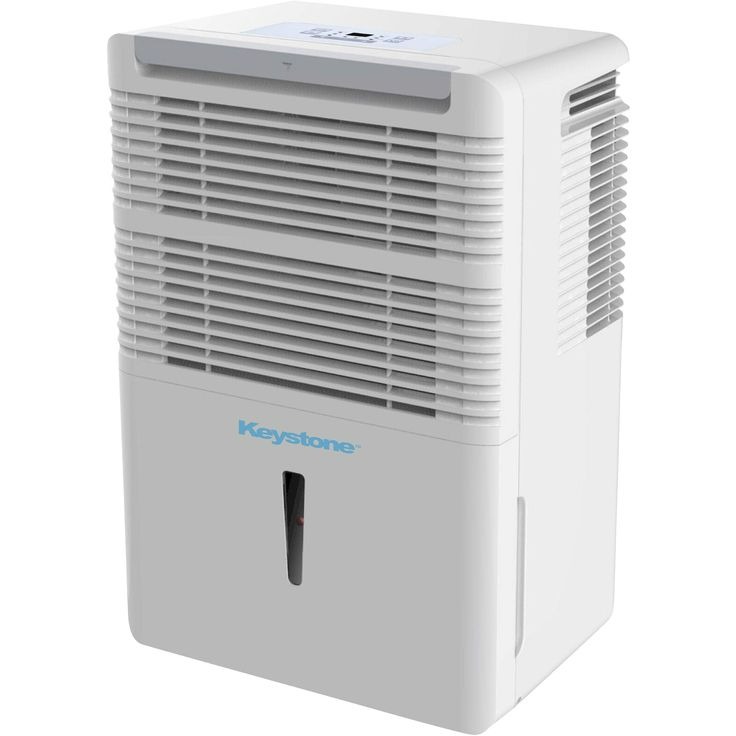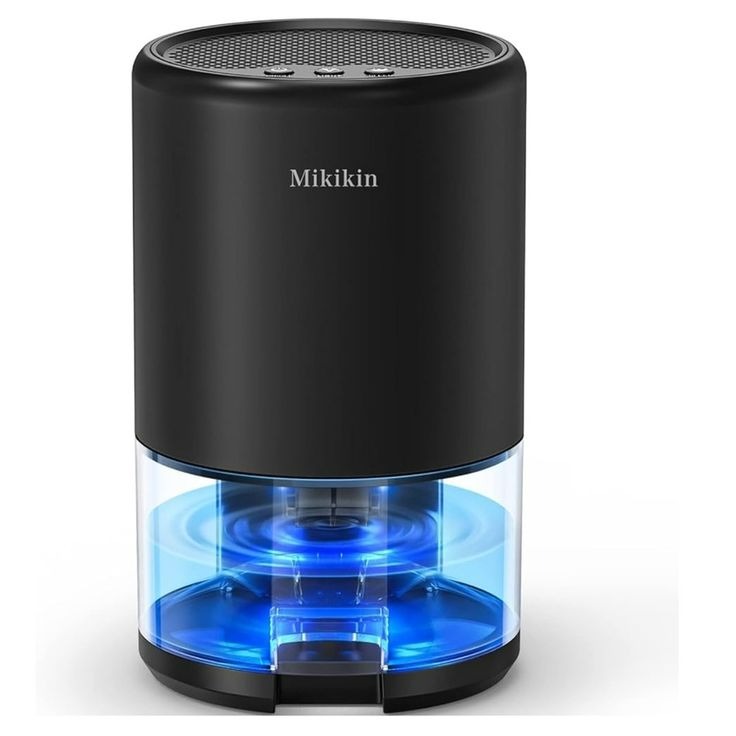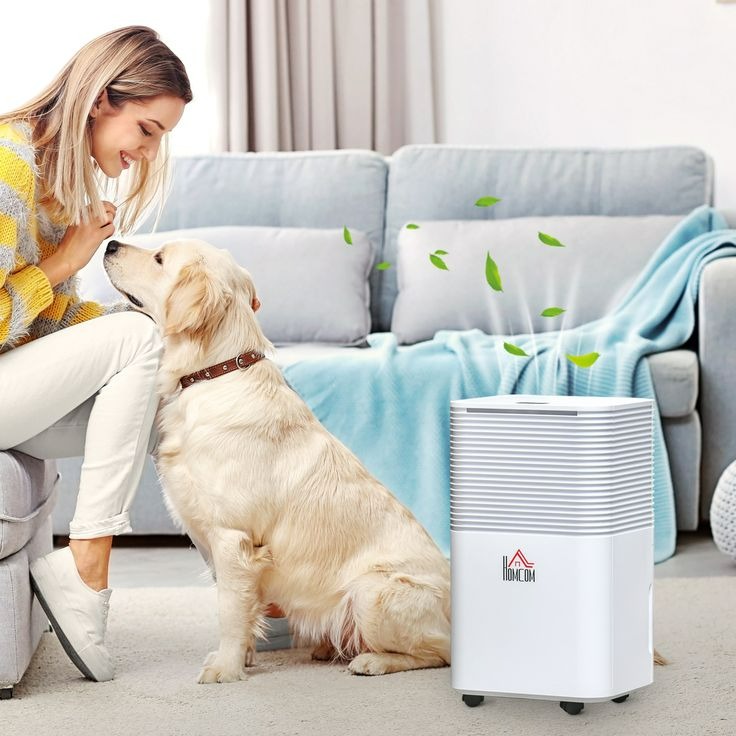What is a Dehumidifier and How Does It Work?
A home dehumidifier is a device that reduces humidity levels in the air. It works by drawing moist air in and passing it over a refrigerated coil. As the air cools, moisture condenses into water. This water collects in a tank within the dehumidifier. Dry air then exits the device and re-enters the room, resulting in a more comfortable environment.
Dehumidifiers come in various sizes with different features to suit home needs. They range from small, portable units to larger, permanent fixtures. Some use a desiccant material to absorb moisture without refrigeration. These devices are especially useful in colder environments where traditional refrigerated coils might freeze.
Understanding how a home dehumidifier works can help you choose the right one. It also guides you in using it effectively to get the best results. Properly maintained, a dehumidifier can provide years of comfort and air quality in your home by regulating humidity levels.

The Importance of Humidity Control in Your Home
Controlling humidity is crucial for a comfy, healthy home atmosphere. High humidity can lead to unwelcome issues like mold, mildew, and dust mites. These allergens can trigger allergies, asthma, and other respiratory problems. A damp environment is also an ideal breeding ground for pests.
Furthermore, excess moisture can damage your home’s structure and furniture. It can cause wood to warp, paint to peel, and metals to corrode. Electronics and appliances might also suffer, as they are sensitive to moisture levels.
Maintaining the right humidity level keeps the air you breathe healthy. It helps protect your home and belongings, and can even save on energy costs. Dry air feels cooler in the summer and warmer in the winter, so you can rely less on heating and cooling systems. By using a home dehumidifier, you can avoid these problems and enhance overall comfort.
Types of Dehumidifiers for Home Use
When choosing a home dehumidifier, understanding the types available is vital. Here are the common categories:
Compact Dehumidifiers: These are small, portable units ideal for single rooms. They are lightweight and easy to move around.
Whole-House Dehumidifiers: These systems connect to your home’s HVAC. They control humidity throughout your entire house. Installation by a professional is usually required.
Desiccant Dehumidifiers: Unlike others, they don’t use refrigeration. They absorb moisture with a drying agent. Good for cold areas where coils can freeze.
Heat Pump Dehumidifiers: These use a heat pump to remove air moisture. They are energy efficient and effective in varied temperatures.
Ventilating Dehumidifiers: Great for areas like bathrooms or kitchens. They pull out moist air and replace it with dry air from outside.
Each type of dehumidifier caters to different needs and spaces. Consider the size of the space, humidity levels, and temperature conditions when selecting the right one for your home. A home dehumidifier can make a real difference in air quality and comfort.

The Benefits of Using a Dehumidifier
Embracing a home dehumidifier offers several advantages for homeowners. Introducing such a device into your living space can lead to a wide array of improvements in both your home’s health and your own personal comfort. Here are some key benefits you can expect:
Healthier Air Quality: A dehumidifier helps reduce the presence of allergens like mold, mildew, and dust mites. This leads to cleaner air and fewer allergy symptoms.
Comfortable Humidity Levels: It maintains ideal humidity levels, making your home feel cooler in summer and warmer in winter. This can enhance your overall comfort.
Protection for Your Home: By controlling moisture, a dehumidifier protects the structure of your home and your belongings from damp-related damage.
Energy Savings: A lower humidity level means your air conditioner works less to cool the air, leading to energy savings and lower utility bills.
Pest Reduction: Damp environments attract pests. A dehumidifier will make your home less inviting to unwanted critters like cockroaches and silverfish.
Odor Elimination: Musty smells are often associated with damp areas. Home dehumidifiers help get rid of these odors, leaving your space smelling fresh.
Through these benefits, a home dehumidifier is not just an appliance; it’s an investment in a more comfortable, healthier home environment. With regular use and maintenance, you can enjoy these advantages year-round.
Key Features to Look for When Buying a Home Dehumidifier
When shopping for a home dehumidifier, key features can make all the difference. Here are some you should consider:
Capacity: The dehumidifier’s size matters. Choose one that matches the size of your space.
Humidistat: This feature lets you control humidity levels precisely. Look for an adjustable humidistat for custom comfort.
Continuous Drainage: Units with this option don’t need emptying often. It’s convenient for busy households.
Automatic Shut-off: The dehumidifier turns off when the tank is full. This prevents spills and saves energy.
Air Filtration: Some dehumidifiers have filters to clean the air. This improves air quality even more.
Noise Level: Consider how much sound the device makes. Quieter units are better for living spaces and bedrooms.
Energy Efficiency: An energy-efficient home dehumidifier saves money on bills. Look for Energy Star ratings.
Portability: If you need to move the unit, wheels and handles are helpful.
Warranty: Check the warranty length. A longer warranty means more protection for your purchase.
By focusing on these features, you can find a home dehumidifier that fits your home’s needs perfectly and provides optimal comfort and efficiency.

How to Properly Use and Maintain Your Home Dehumidifier
Proper use and maintenance of your home dehumidifier are crucial for its effectiveness and durability. Here are some steps and tips to ensure you get the most out of your device:
Read the Manual: Start by reading the user manual. It has specific instructions for your model.
Ideal Placement: Place your dehumidifier in a central location. Avoid blocking vents or coils.
Humidity Settings: Set the humidistat to a comfortable level. Typically, 30-50% is best for homes.
Regular Cleaning: Clean the air filter monthly. Wipe the water tank each time you empty it.
Proper Storage: If you’re not using it, store your dehumidifier in a dry place.
Timely Repairs: Address issues as soon as they appear. This can prevent bigger problems.
By following these straightforward steps, you’ll ensure your home dehumidifier runs smoothly. This leads to a comfortable home environment and prolongs your unit’s life.
Troubleshooting Common Dehumidifier Problems
Despite their reliability, home dehumidifiers can face issues over time. Knowing how to handle common problems ensures longevity and optimal performance. Here are typical troubles you might encounter with solutions to keep your home dehumidifier running effectively:
Not Collecting Water: If the unit isn’t filling the tank, ensure it’s in a humid environment. Check the settings. Maybe they’re too low. Clean the air filter as well.
Ice Build-Up: Ice can form on coils in colder conditions. If this happens, turn off your dehumidifier. Let it defrost. Consider a desiccant dehumidifier for cold areas.
Strange Noises: Banging or whirring sounds could signal a loose part. Inspect your unit for any loose components and tighten them. If the noise persists, the motor might need attention.
Bad Odors: Stale smells often come from a dirty water tank. Regularly clean the tank with mild soap. Dry it well to prevent odor-causing bacteria.
Auto Shut-Off Failure: If the dehumidifier does not turn off, it could be a sensor issue. Check the water tank isn’t misaligned. Consult the manual for troubleshooting tips or seek professional help.
Unit Keeps Running: When the dehumidifier doesn’t stop, the humidistat might be the problem. Test the humidistat with a hygrometer. Replace it if needed.
By addressing these common problems, you can extend your home dehumidifier’s life. Regular maintenance is key to ensuring your device remains a valuable asset in your home comfort system.
The Impact of Dehumidifiers on Energy Consumption and Savings
Using a home dehumidifier impacts your energy usage and savings. Here’s how it works:
Reduced Air Conditioning Load: Dry air feels cooler. With a dehumidifier, you use the AC less.
Enhanced HVAC Efficiency: Dehumidifiers ease the load on HVAC systems. This leads to lower energy use.
Extended Appliance Lifespan: Appliance stress from humidity drops. This means less energy over time.
Improved Comfort at Higher Thermostat Settings: Setting the thermostat higher in summer costs less.
Energy Star Ratings: Look for this feature. It means the dehumidifier uses less power.
When you control moisture with a dehumidifier, you can cut down on energy bills. The appliance helps maintain ideal humidity. This leads to a reduced need for heating and cooling. And, an energy-efficient dehumidifier model adds to the savings.